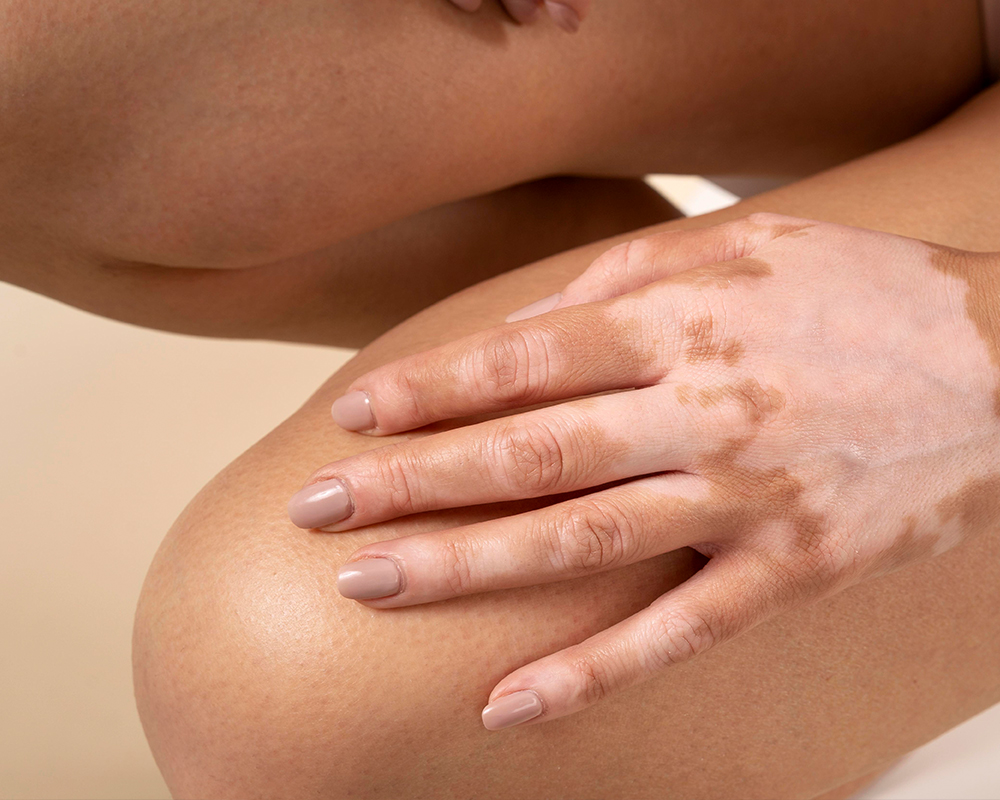
Know everything about vitiligo and its treatment.
Vitiligo is considered to be a skin condition. In this condition, the skin loses its colour and turns white. The situation occurs when the cells producing melanin do not work or are destroyed. However, this is not a harmful or contagious skin condition, but its overall appearance can affect the confidence and emotional health of a person. People are not fully aware of this skin condition and its treatment. With proper care and support, informed treatment can be opted for.
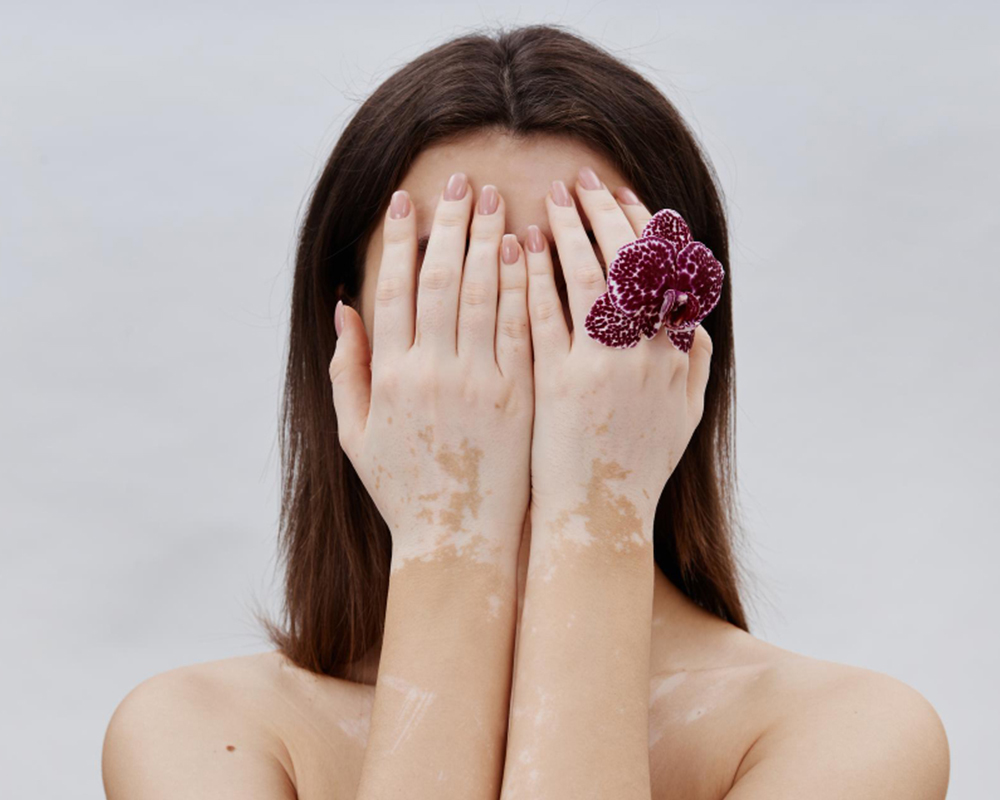
Understanding the vitiligo skin condition
This is a long-term skin condition. In this condition there are skin patches and the natural color of the skin can be lost. It mainly happens when melanocytes, which are known to be cells held responsible for melanin production, suddenly stop functioning or get destroyed. Melanin is highly responsible for offering the colour to the skin, hair, and eyes. When these cells are not present, then the patches of white or pale colour can appear on the skin.
This skin condition can appear on any body part, such as the face, hands, lips, legs, etc. There are some cases where vitiligo can affect the scalp, which can cause hair to be grey. This condition can remain stable for some time, but can also spread with passing time.
Know about the types of vitiligo
There are different vitiligo types, such as:
Non-segmental vitiligo
This is a very common form that appears on both sides of the body and in a symmetrical pattern.
Segmental vitiligo
This can happen at an early age and it can be on the body’s one side.
Focal vitiligo
Focal vitiligo is limited to one or more areas. This type does not spread over the years.
Lip and mucosal vitiligo
This vitiligo type can appear on the lips, the inner parts of the mouth, or can also happen inside the parts of the nose.
No wonder the pattern or pigment loss in one person can be different from the other person. But it is essential to know its nature so that you can start working on its proper care and support.
What are the causes and risk factors involved with vitiligo?
The causes of vitiligo are not completely known, but it is believed that the condition is linked with the amalgamation of factors like genetic, autoimmune, and environmental factors. During this condition, the immune system of the body might attack or destroy melanin-producing cells, which further leads to skin pigment loss.
Here are some factors that can lead to vitiligo development:
- Autoimmune conditions
People facing autoimmune diseases like thyroid issues, type 1 diabetes, etc., are at higher risk of developing vitiligo.
- Genetics
If there is a family history of vitiligo or any kind of autoimmune disease, then it can enhance the risk. However, it is not essential that people with genetic links are going to develop or face vitiligo.
- Skin trauma
Any kind of cuts, sunburns, or chemical exposure can lead to vitiligo in many individuals.
- Emotional stress
This is not a direct cause, but facing prolonged stress can make the existing vitiligo worse. Also, it can contribute to its onset in people who are at risk.
- Oxidative stress
Any kind of imbalance in the ability of the body to handle free radicals can also lead to the destruction of the melanocytes.
It is essential to note that vitiligo does not happen because of poor health or any kind of infection. Also, it is not going to spread via physical contact. It can be faced by people who have different skin tones and can be more visible in people having dark skin.
What are the signs and symptoms of vitiligo?
Vitiligo can start to appear with small or pale spots and become lighter and turn white. The patches are going to be of uneven shape and can also have different sizes. With passing time, the vitiligo can remain stable, or there is also a possibility that it is going to spread to other body parts.
The common signs of vitiligo are:
- White and depigmented skin patches, which are mainly sun-exposed, like arms, face, etc.
- Vitiligo can be seen around the lips, mouth, fingertips, etc.
- Early grey scalp hair, beard, eyebrows, etc.
- Mucous membranes can even face colour loss, which can be inside the mouth and nose.
The vitiligo is painless and does not cause itching, but it can appear to be distressing. Its progression can stop with time, but in others, it may spread with time.
What treatments can be opted for vitiligo?
The treatment of vitiligo can be opted for depending on the extent of pigment loss, affected skin areas, and the progression of it. It is not possible to reverse vitiligo completely, but opting for the right treatment can help restore the skin colour and manage it.
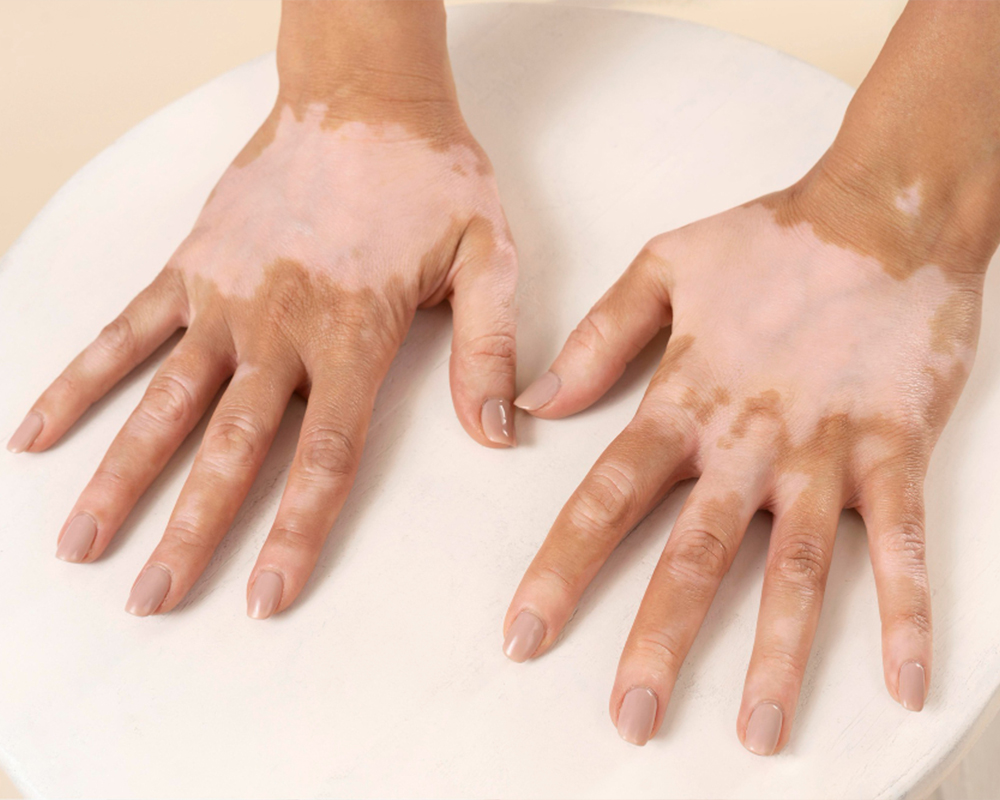
- Topical medications
Corticosteroid creams and other inhibitors can be helpful in minimising inflammation and lead to repigmentation. This can happen during the early stages or when there are small patches.
- Light therapy
Opting for narrowband UVB therapy can be highly effective. It exposes the skin to ultraviolet light, which is controlled and helps with melanin production.
- Excimer laser
This treatment is meant for targeted areas in localised vitiligo. The focused beam of UVB light can be beneficial in enhancing pigmentation.
- Surgical treatments
If there is vitiligo that has not changed for more than a year, opting for a skin grafting can be the best option. This treatment is suggested when no other treatment is working.
- Lip vitiligo treatment
It can be difficult to treat lip vitiligo. Treatments involving topical medications or laser therapy can be helpful to show the results. However, it can be time-consuming, but the results can vary from one person to another.
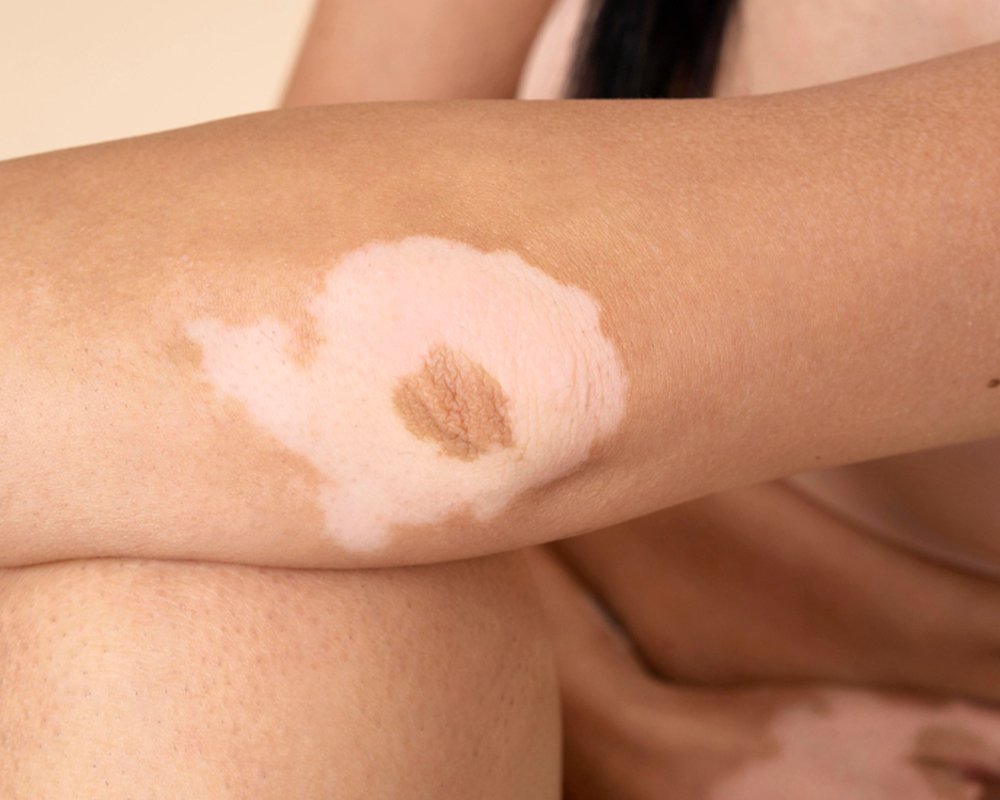
When is the right time to consult a doctor?
Vitiligo is not considered a life-threatening condition, but medical attention is needed when the patches are spreading. Proper and early diagnosis can help in getting the best outcome.
Here are some points defining the right time to consult a vitiligo doctor:
- The white patches are enhanced in size or number.
- Vitiligo can be seen on visible areas like the face, hands, etc., which can lead to complete discomfort and emotional stress.
- The colour loss can be seen in the eyes, mucous membranes, etc.
- Daily activities or self-esteem are highly affected.
- Children or people show signs of pigment loss.
Remarkable Results That Speak Volumes
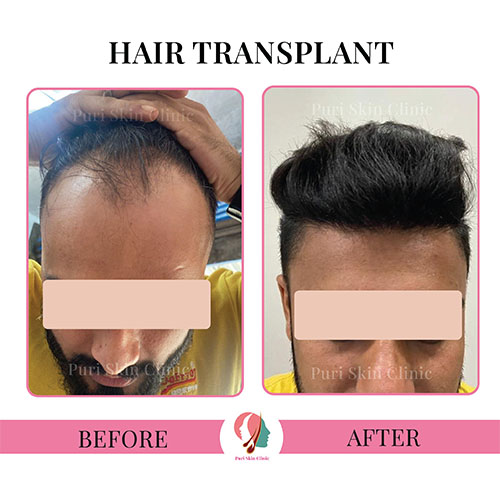
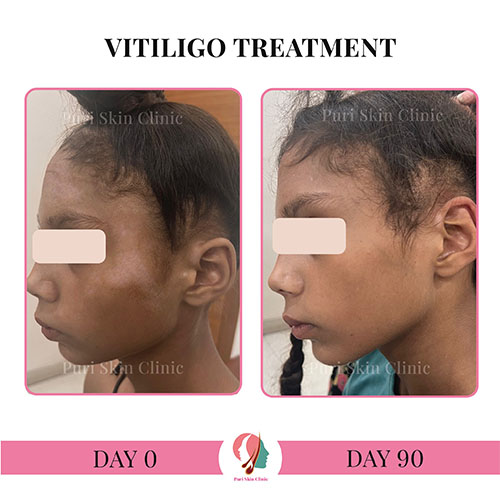
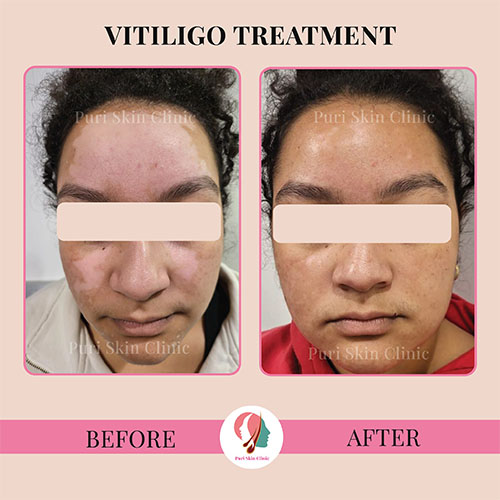
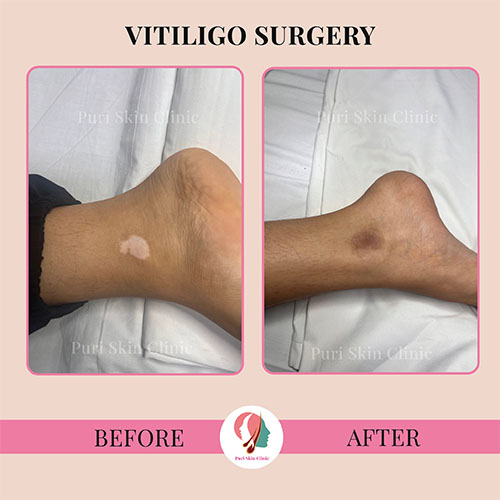
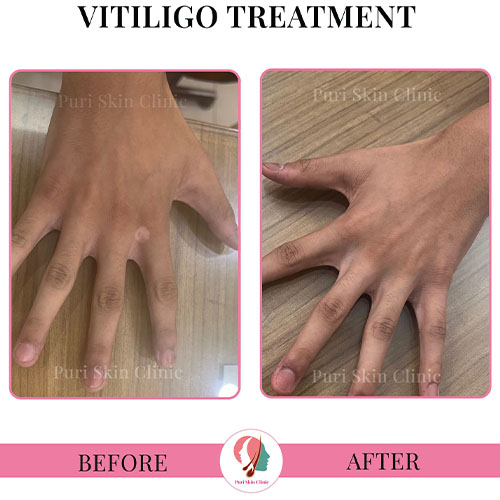
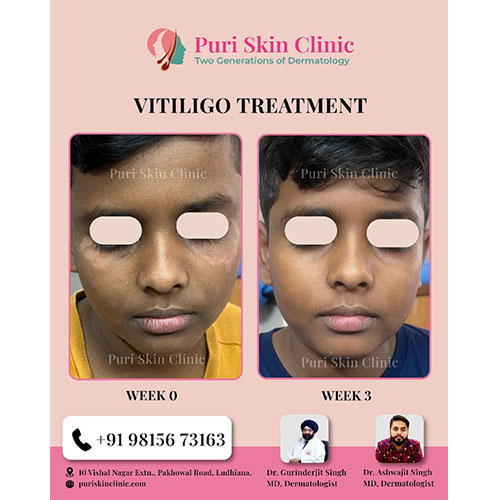
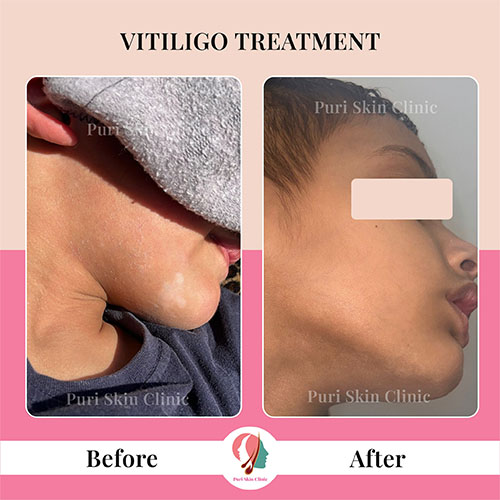
Puri Skin Clinic: Offering you the best vitiligo treatment
Choosing the best skin clinic when it comes to vitiligo treatment holds importance. Puri Skin Clinic offers the best vitiligo treatment and surgical processes, which can be effective in enhancing your appearance and boosting your self-confidence. We have skilled dermatologists who will thoroughly guide you and discuss the possible treatments depending on your condition, along with the vitiligo treatment cost in Ludhiana. Visiting us can be a life-changing experience.
Book Appointment
Why Choose PRP Treatment at Puri Skin Clinic?

Expert Dermatologist

Advanced Techniques

Personalized Care

Minimally Invasive
Our Happy Customers
Riya Sharma, Ludhiana
“Puri Skin Clinic did wonders for my son Aarav’s vitiligo. Their expert care and personalized approach led to great results. We’re grateful for their professionalism and support throughout the treatment.”
Neha Patel, Ludhiana
Ravi Gupta, Ludhiana
“Thanks to Puri Skin Clinic, my vitiligo treatment was a success. Their cutting-edge methods and compassionate care made a significant difference. I’m very pleased with the results.”
